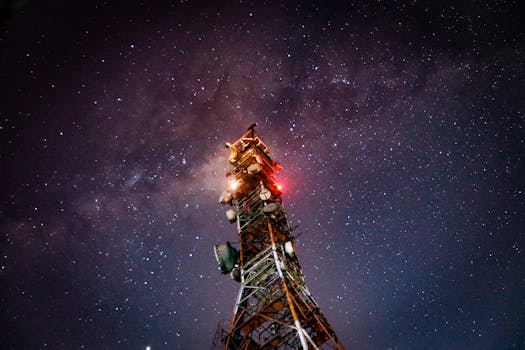
Starlink: Revolutionizing Global Internet Connectivity with Satellite Technology
Starlink, a satellite constellation developed by SpaceX, is transforming the way we think about global internet connectivity. With its ambitious goal of providing high-speed, low-latency internet access to every corner of the globe, Starlink is poised to revolutionize the way we communicate, work, and live. In this article, we will delve into the world of Starlink, exploring its technology, applications, and potential impact on society.
What is Starlink?
Starlink is a network of low-Earth orbit (LEO) satellites designed to provide fast, reliable, and affordable internet connectivity to anyone, anywhere in the world. The constellation consists of thousands of small satellites, each weighing around 230 kilograms, that are launched into orbit using SpaceX’s Falcon 9 rocket. Once in orbit, the satellites use advanced phased array technology to communicate with each other and with ground stations, providing a mesh network of interconnected satellites that can transmit data at speeds of up to 1 GB/s.
The Starlink system is designed to be highly redundant, with multiple satellites providing coverage to each area, ensuring that if one satellite is unavailable, others can take its place. This redundancy, combined with the use of advanced software and routing algorithms, enables Starlink to provide a highly reliable and resilient network that can withstand disruptions and outages.
How Does Starlink Work?
So, how does Starlink actually work? The process begins with the user, who purchases a small, compact terminal that communicates with the Starlink satellites. This terminal, which resembles a small dish antenna, is connected to the user’s device, such as a laptop or smartphone, and uses advanced beamforming technology to establish a connection with the nearest Starlink satellite.
Once connected, the user’s data is transmitted to the satellite, which then forwards it to the nearest ground station. From there, the data is routed to its final destination on the internet, using a combination of fiber optic cables and undersea cables. The entire process, from the user’s device to the final destination, typically takes around 20-30 milliseconds, which is comparable to traditional fiber optic internet connections.
One of the key advantages of Starlink is its ability to provide internet access to remote and underserved areas, where traditional infrastructure is lacking. By using satellites to provide connectivity, Starlink can reach areas that are difficult or expensive to serve using traditional methods, such as fiber optic cables or cell towers.
Applications and Potential Impact
So, what are the potential applications and impact of Starlink? One of the most significant areas of impact is in bridging the digital divide, which refers to the gap between those who have access to modern information and communication technologies and those who do not. By providing internet access to remote and underserved areas, Starlink can help to level the playing field, enabling people in these areas to access the same information, education, and economic opportunities as those in more developed regions.
Another area of impact is in emergency response and disaster relief. In the aftermath of a natural disaster, such as a hurricane or earthquake, traditional communication infrastructure is often destroyed or disrupted, leaving people without access to critical information and services. Starlink can provide a rapid and reliable means of restoring communication, enabling emergency responders to coordinate their efforts and provide critical services to those in need.
Starlink also has the potential to transform the way we work and live, enabling remote work, distance learning, and telemedicine. By providing fast and reliable internet access, Starlink can enable people to work from anywhere, at any time, and to access critical services and resources, such as healthcare and education, from the comfort of their own homes.
Challenges and Future Developments
While Starlink holds tremendous promise, there are also challenges and uncertainties surrounding its development and deployment. One of the key challenges is in managing the orbital environment, as the launch of thousands of satellites into low-Earth orbit raises concerns about space debris and the potential for collisions.
Another challenge is in ensuring that Starlink is accessible and affordable for all, particularly in developing countries and rural areas. While the cost of the Starlink terminal is relatively low, at around $500, the monthly subscription fee may still be out of reach for many people, particularly in areas where incomes are low and access to credit is limited.
Despite these challenges, SpaceX is pushing forward with the development and deployment of Starlink, with plans to launch thousands of additional satellites in the coming years. The company is also working to improve the performance and capabilities of the Starlink system, through the use of advanced technologies such as laser communication and artificial intelligence.

